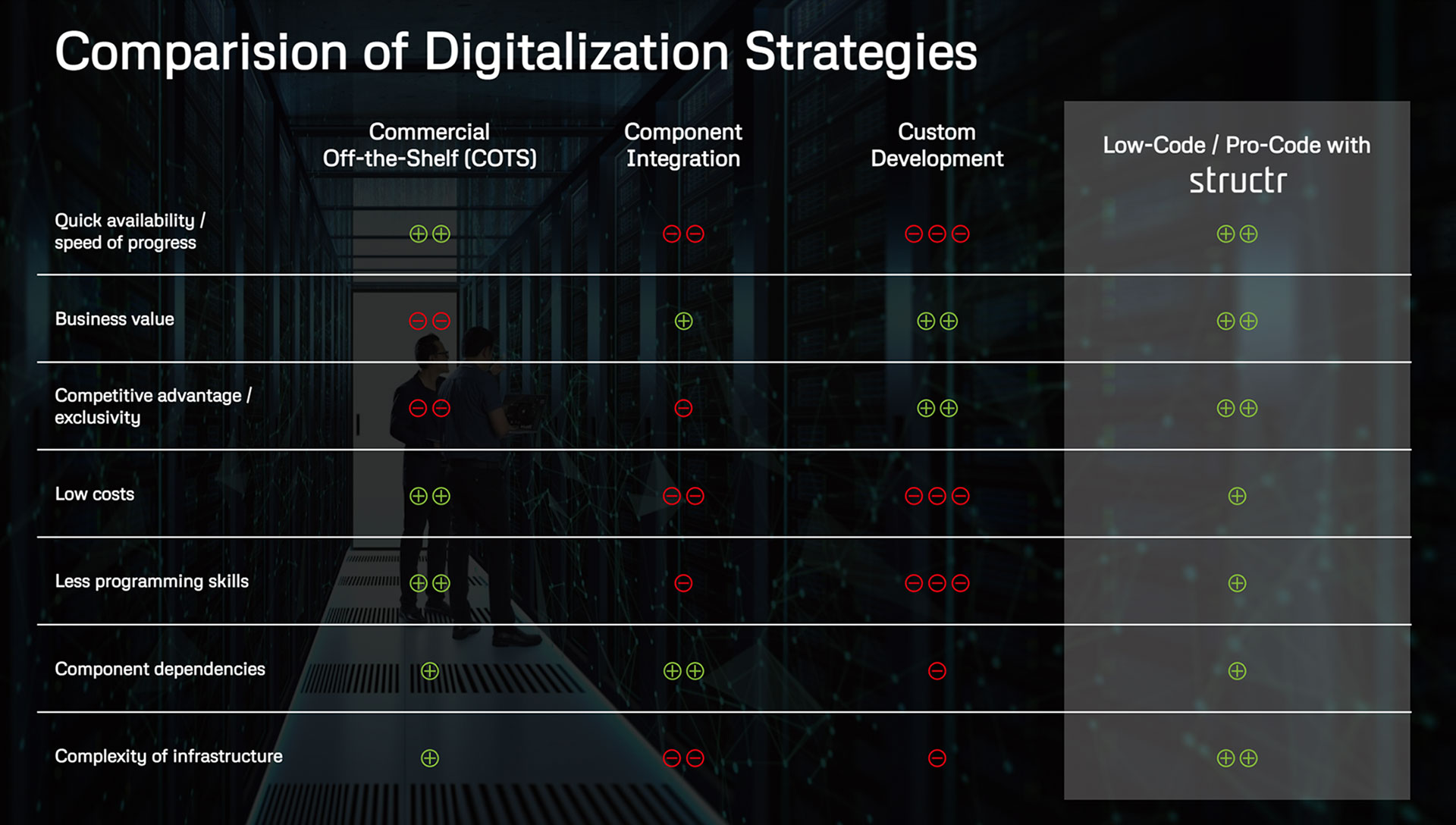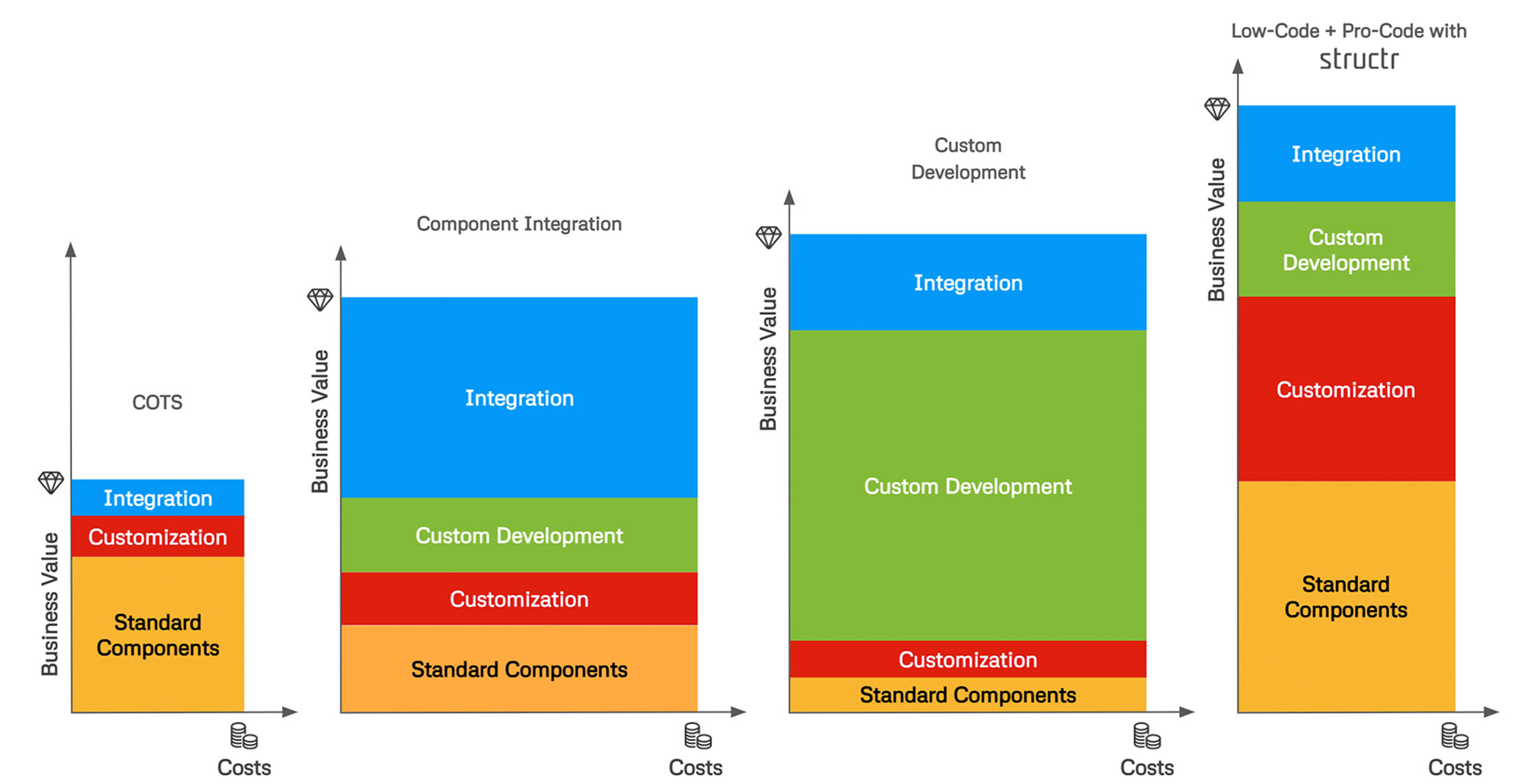How a Combined Low-Code/Pro-Code Approach Compares to Classic Digitalization Strategies
If we look at the benefits of different strategies in digitization projects, we have to make decisions based on the requirements, the business value we can achieve, or the uniqueness of the software solution. Based on the level of customization, projects are divided into these three common segments: Commercial Off-the-Shelf (COTS), Component Integration and Custom Development.
According to classic pigeonhole thinking, the following classification can be made depending on the requirements of a system:

COTS is suitable if the requirements for the system are well defined, not overly complex and standard solutions are available.
Component Integration requires a certain degree of differentiation according to individual requirements, which can be achieved by integrating individual components into the existing IT landscape.
In Custom Development projects, the focus is on an innovative, unique system that is specifically tailored to the use cases of an organization. The initial requirements and constant changes defined by the customer as well as the level of project support by the development team is relatively high.
Now it's time to break down the pigeonholes and throw a holistic opportunity into the ring: Structr. With the capabilities of graph technology and the integration of low-code and pro-code elements alike, Structr is naturally most efficient and effective in projects where the requirement is not comprehensively defined and the customization needs of the solution are correspondingly higher. In the above classification, this corresponds to a system of component integration and custom development.

But Structr is also the right partner for you if you are actually considering a Commercial Off-the-Shelf solution and find that the application you need is either not available in the required form or is too complex or expensive, if you still need adjustments that in turn drive up the price (and eventually push you back to the limits of standardization), if you want to have more control over your system or if you want to keep other options open for differentiation in the future.
